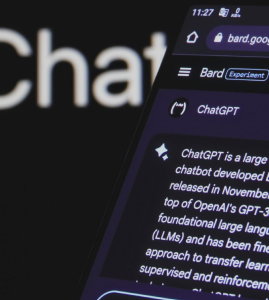Summary: While full-text feeds are under-valued today, they will be an
integral part of the content ecosystem in the near future. And that’s when their true
value will be recognized.
James Gross from the Feedster blog has an interesting post
about how full-text feeds will provide much more value in future than today:
“What has been unfair for bloggers, or anyone publishing a feed, is the ability to
capture the value of a published feed. What writer for a print newspaper can say that
they have 10,700 readers to their article on page 14 of section c every day? That is what
Richard MacManus of Read/Write Web can justifiably say everyday about his blog article on
his full text feed. Maybe the number isn’t perfect, but the principle is, and
having a one to one relationship between publisher and reader is what any ad agency
should be looking for. This relationship is not valued correctly and probably won’t
be for awhile, but that doesn’t mean you shouldn’t participate. Markets tend
to work themselves out; disruptive technologies simply take a little longer.”
Feeds currently under-valued
I agree with James that my full-text feed is under-valued by the current blogging
system. Currently I put no ads in my RSS feed on Read/WriteWeb, although clearly if I
wanted to maximize what little revenue I make from Read/WriteWeb – then I’d put ads in my
feed. I don’t for two reasons:
1) Too many people still don’t like ads in their RSS feeds and so they will squawk
loudly about any publisher that has the temerity to put ads in their feed.
2) Even if I do put ads in my RSS feed, the returns aren’t yet good enough. As I’ve written
before, the pay-per-click model just doesn’t work for RSS advertising (people have
enough trouble clicking on actual story links in their RSS Aggregators, let alone
clicking on adverts!). The CPM model (cost per 1,000 impressions) is better for RSS and
is what services like Feedburner, Pheedo and Nooked are experimenting with currently. But
CPM is by no means perfect. As James says, the industry hasn’t yet worked out how to
properly value full-text feeds.
Personally I think we need something like a CPbM model (Cost Per Branded Impression, a term which I
just made up…). And this appears to be reinforced by Feedburner
data:
“How RSS ads should best be targeted was something else Feedburner considered in its
testing. It found readers psychologically associated an ad with the individual post in
which it appeared. On a site, the ad is usually considered part of the site as a whole.
[but] Posts are often too short to provide enough information about the proper context.
One answer may be to use the overall site content, rather than individual post
content, as a basis for targeting.”
(emphasis mine)
The value is your brand, which is your feed
In my weird lexicon, CPbM = Cost Per Branded Impression = the value of your “overall site
content” together with how many impressions per post.
Why did I equate branding with content? Because how else can your brand value be formulated, when there is little visual design in your
full-text RSS feed. Your content is your brand – and will increasingly be so in the ‘Web
2.0’ world. This is something I’m exploring in the book I’m co-writing – how the brand of
a site these days is much more about content than about visual design.
As for how that will be monetized, well I haven’t worked that out yet 🙂
OK, but where’s the value in full-text feeds today?
Publishing full-text RSS provides value today in two ways:
1) Reader convenience
2) It optimizes the chances of you being read – and syndicated as widely as possible
(within the terms of whatever copyright license you have, of course)
And as James says, “efficent monetization will come in time”. If I have any say in the
matter, it’ll be monetized according to the brand value of a feed.
Blog feeds decreasing in popularity
James also brings up another great point:
“Increasingly blogs, as text, are becoming a smaller percentage of feeds overall. Look
to photos, voice, video, newsletters, social networks, traffic alerts, etc. to make up a
more substantial percentage of the overall mix.”
This is a trend that I’ve been tracking for some time – e.g. my post from January 2005
entitled Why
Topic/Tag/Remix Feeds Are The Future of RSS. It looks like 2006 will be the year when
this trend finally kicks in. Indeed Paul Kedrosky quotes an unnamed
source about Yahoo:
“According to Yahoo stats, only one of the top 20 most popular RSS feeds that My Yahoo
subscribers are adding to their page is a blog.”
That may just mean that mainstream media feeds make up the majority of the top 20
feeds that My Yahoo tracks. Which in itself is an interesting stat – I’ve emailed Yahoo to
try and get confirmation of Paul’s post. But it’s also a pointer to the future of feeds,
when the most popular feeds will be things like weather feeds, keyword-tracking, traffic
alerts, etc.
OR, as I’ve been trying to find a way to say for a while, it may mean that the future
of blogs isn’t so much people subscribing to full text feeds of individual blogs. But
people subscribing to amalgamated feeds of more than one blog, or mixed-author ‘on the
fly’ feeds that have a limited shelf life. In that scenario of course, the full-text
feed becomes an integral part of the system. Because if you don’t publish your full
content in your feed, you will miss out on all the remix and topic-focused feed
action.
Of one thing I’m convinced: full-text feeds will be where the value resides in the
near future. If you’re still publishing excerpts then, your brand will be living on
borrowed time.

















